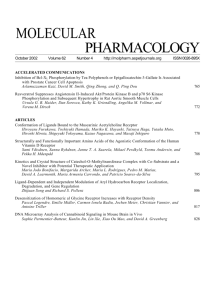Kevin Ahern's Biochemistry (BB 450/550) at Oregon State University
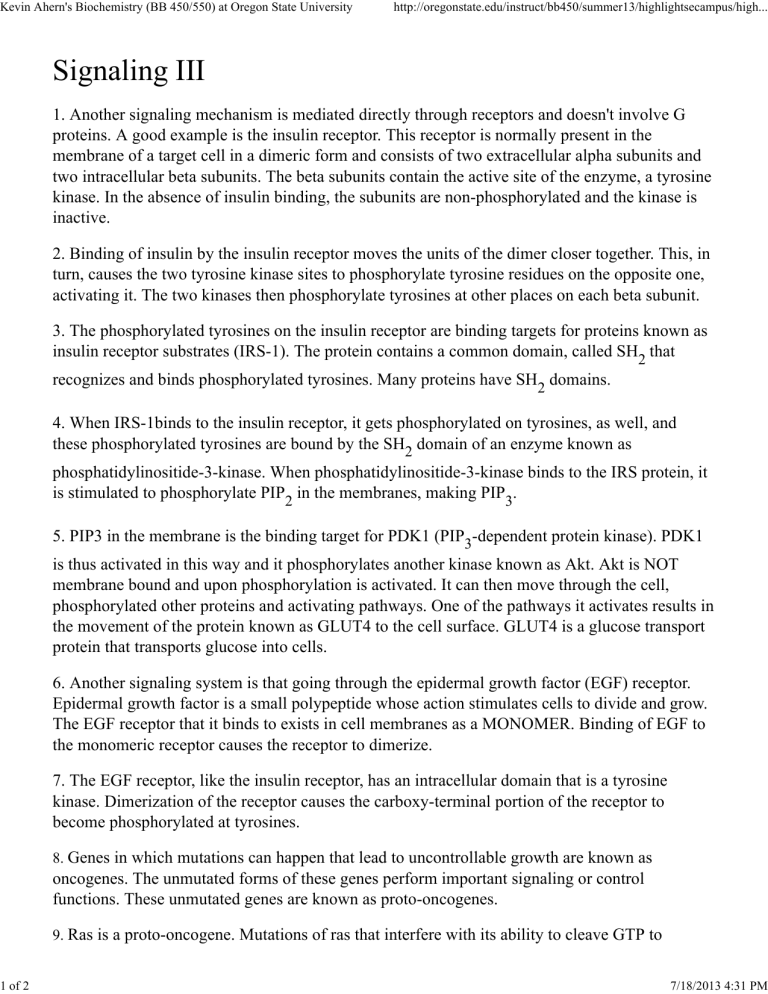
Kevin Ahern's Biochemistry (BB 450/550) at Oregon State University http://oregonstate.edu/instruct/bb450/summer13/highlightsecampus/high...
1 of 2
Signaling III
1. Another signaling mechanism is mediated directly through receptors and doesn't involve G proteins. A good example is the insulin receptor. This receptor is normally present in the membrane of a target cell in a dimeric form and consists of two extracellular alpha subunits and two intracellular beta subunits. The beta subunits contain the active site of the enzyme, a tyrosine kinase. In the absence of insulin binding, the subunits are non-phosphorylated and the kinase is inactive.
2. Binding of insulin by the insulin receptor moves the units of the dimer closer together. This, in turn, causes the two tyrosine kinase sites to phosphorylate tyrosine residues on the opposite one, activating it. The two kinases then phosphorylate tyrosines at other places on each beta subunit.
3. The phosphorylated tyrosines on the insulin receptor are binding targets for proteins known as insulin receptor substrates (IRS-1). The protein contains a common domain, called SH
2 that recognizes and binds phosphorylated tyrosines. Many proteins have SH
2
domains.
4. When IRS-1binds to the insulin receptor, it gets phosphorylated on tyrosines, as well, and these phosphorylated tyrosines are bound by the SH
2
domain of an enzyme known as phosphatidylinositide-3-kinase. When phosphatidylinositide-3-kinase binds to the IRS protein, it is stimulated to phosphorylate PIP
2
in the membranes, making PIP
3
.
5. PIP3 in the membrane is the binding target for PDK1 (PIP
3
-dependent protein kinase). PDK1 is thus activated in this way and it phosphorylates another kinase known as Akt. Akt is NOT membrane bound and upon phosphorylation is activated. It can then move through the cell, phosphorylated other proteins and activating pathways. One of the pathways it activates results in the movement of the protein known as GLUT4 to the cell surface. GLUT4 is a glucose transport protein that transports glucose into cells.
6. Another signaling system is that going through the epidermal growth factor (EGF) receptor.
Epidermal growth factor is a small polypeptide whose action stimulates cells to divide and grow.
The EGF receptor that it binds to exists in cell membranes as a MONOMER. Binding of EGF to the monomeric receptor causes the receptor to dimerize.
7. The EGF receptor, like the insulin receptor, has an intracellular domain that is a tyrosine kinase. Dimerization of the receptor causes the carboxy-terminal portion of the receptor to become phosphorylated at tyrosines.
8. Genes in which mutations can happen that lead to uncontrollable growth are known as oncogenes. The unmutated forms of these genes perform important signaling or control functions. These unmutated genes are known as proto-oncogenes.
9. Ras is a proto-oncogene. Mutations of ras that interfere with its ability to cleave GTP to
7/18/2013 4:31 PM
Kevin Ahern's Biochemistry (BB 450/550) at Oregon State University http://oregonstate.edu/instruct/bb450/summer13/highlightsecampus/high...
GDPcan lead to uncontrolled cellular growth.
10. One type of leukemia (CML) arises from DNA rearrangement that joins together two genes known as BCR and ABL. ABL is a tyrosine kinase that plays an important role in controlling when cells divide. When BCR is joined to ABL (making BCR-ABL), the fusion that arises is made in greater quantities than ABL itself and it still contains the tyrosine kinase activity. Thus, the overexpressed fusion stimulates cells to divide uncontrollably.
11. BCR-ABL tumors are successfully treated with a tyrosine kinase inhibitor known as Gleevec, that was invented by a person at OHSU.
2 of 2 7/18/2013 4:31 PM
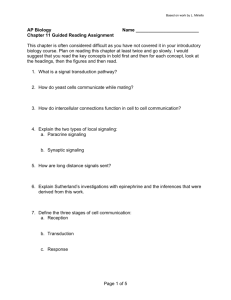

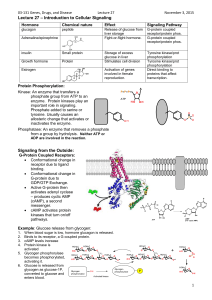
![Anti-Insulin Receptor beta antibody [CT-1] ab80527 Product datasheet 2 References Overview](http://s2.studylib.net/store/data/012624642_1-991d3023ce65a2bb1af391780260da7b-300x300.png)
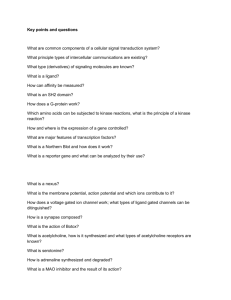
![Anti-VEGF Receptor 1 antibody [AP-MAB0702] ab56300 Product datasheet 2 References Overview](http://s2.studylib.net/store/data/012124206_1-d32314b990f15ec4dec65dd038b8f15c-300x300.png)
